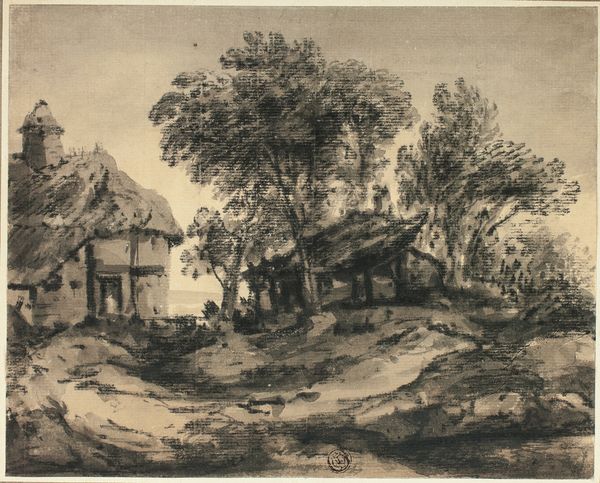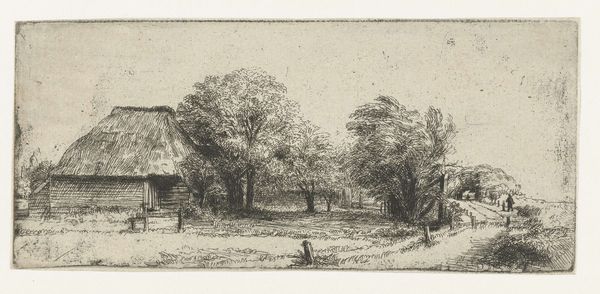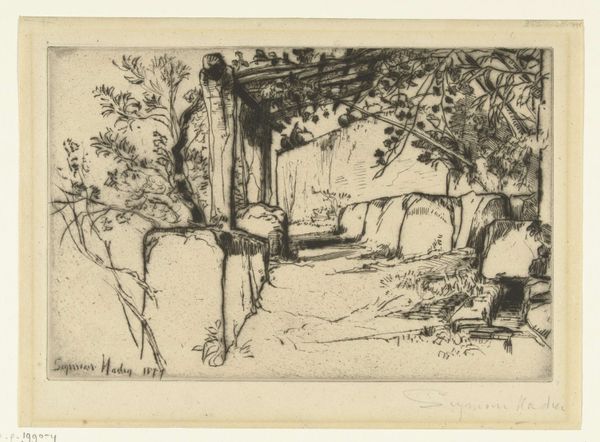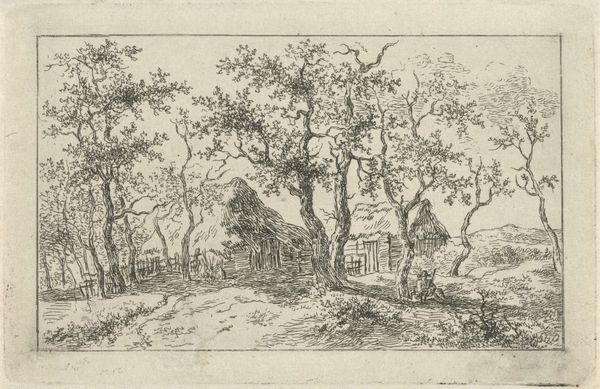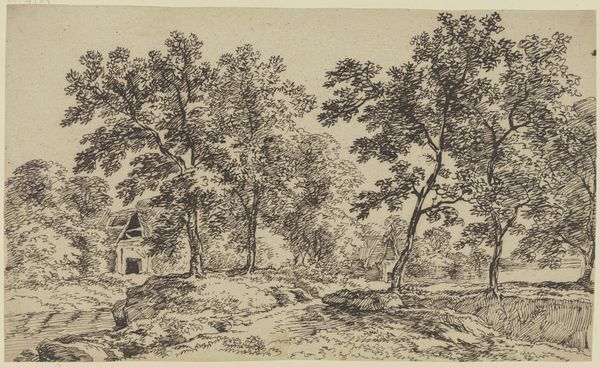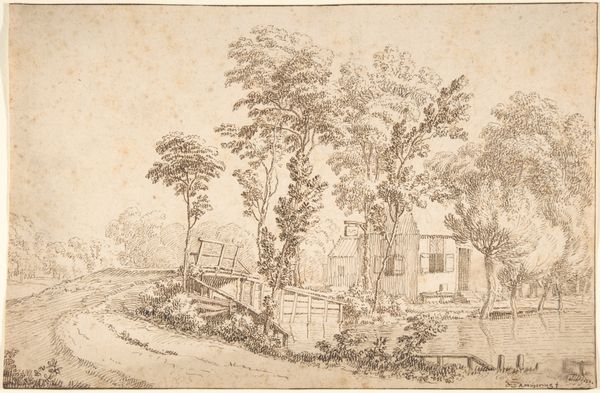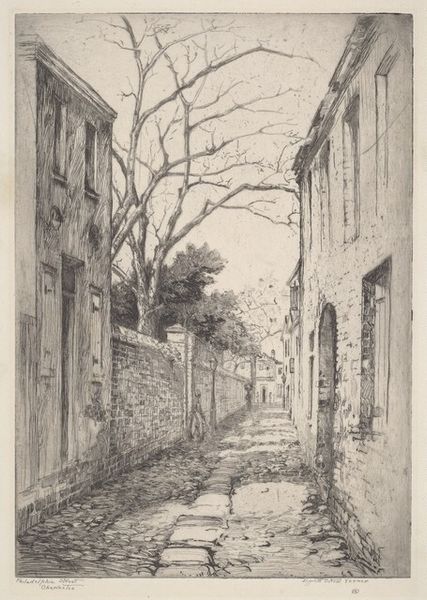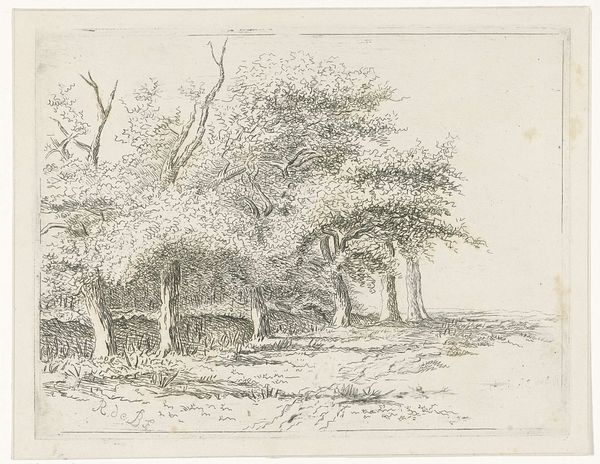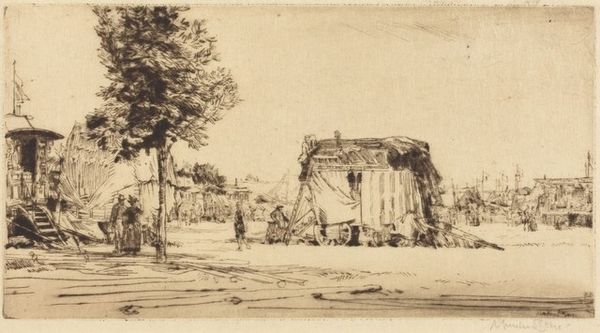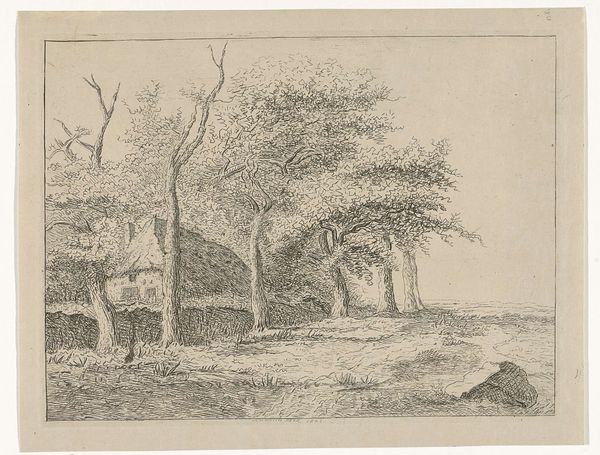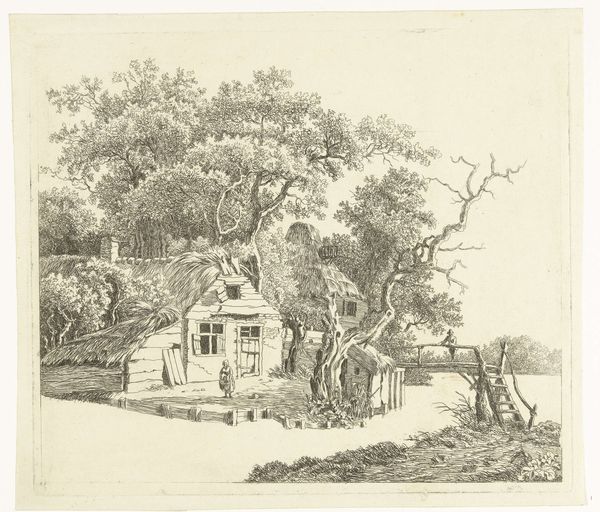
drawing, print, etching, ink
#
pen and ink
#
drawing
#
ink drawing
# print
#
etching
#
landscape
#
etching
#
ink
Copyright: National Gallery of Art: CC0 1.0
Curator: Welcome. Today, we're considering "The Walls of Tillietudlem," an etching rendered in ink on paper, crafted in 1888 by David Young Cameron. Editor: The mood it strikes is quite sombre, even melancholic. The oppressive dark walls contrast heavily against a bright background. Curator: Indeed. Notice the meticulous lines which carve out the shadows and textures, providing a powerful depth to the scene. The composition itself emphasizes a strong horizontal axis intersected by these dominating verticals of the architectural elements. Editor: And yet, aren’t walls often instruments of separation, suggesting restriction and division? These could be indicative of the social or class barriers prevalent in 19th-century society, when questions around power and agency were central to debates concerning colonialism, immigration and industrial reform. Curator: You make a fair point. However, one must also acknowledge Cameron's masterful handling of light and shadow, or chiaroscuro, a key compositional tool here. The contrast invites viewers to observe and engage with these architectural forms and perhaps understand how this work exists in the history of landscape etchings. Editor: Certainly. It's impossible, though, to separate such skillful depictions from the real-world consequences of these built environments: enclosures of land that further marginalised populations, even though they look serene and quaint at first glance. Consider how a critical view interrogates narratives of romantic ruralism and instead unearths themes related to power structures! Curator: A very important point. But let’s not overlook how Cameron orchestrates line and form. See how this repetition contributes significantly, resulting in the visual interest needed in representational art. This ensures visual coherence. Editor: But where and what kind of representation does this artistic choice truly favour? We must consistently be sensitive about this fact, when analysing such works, or risk upholding dominant power dynamics! Curator: True, true. Ultimately, Cameron's composition and skill as an etcher provides insight to a pivotal time in Scotland. Editor: Agreed. Art compels such discourse, challenging all to dissect embedded beliefs, as opposed to just pretty depictions!
Comments
No comments
Be the first to comment and join the conversation on the ultimate creative platform.
